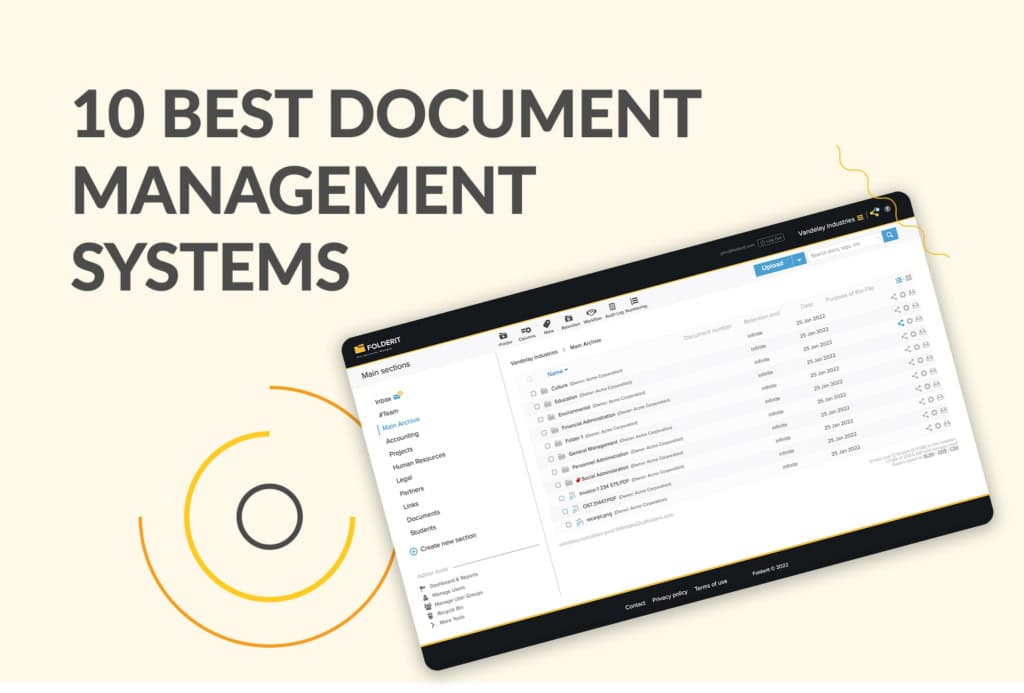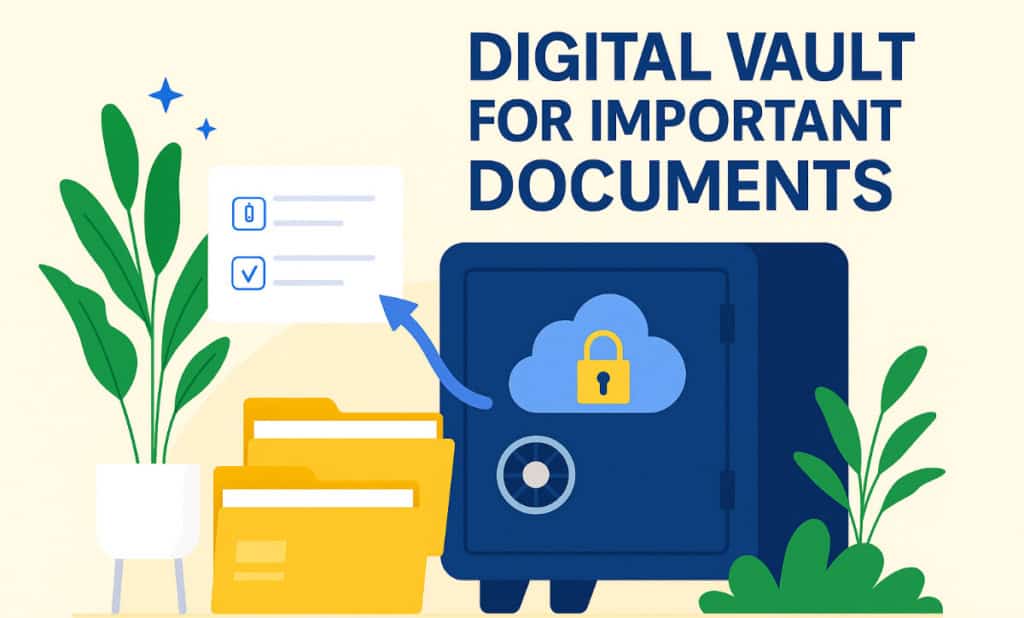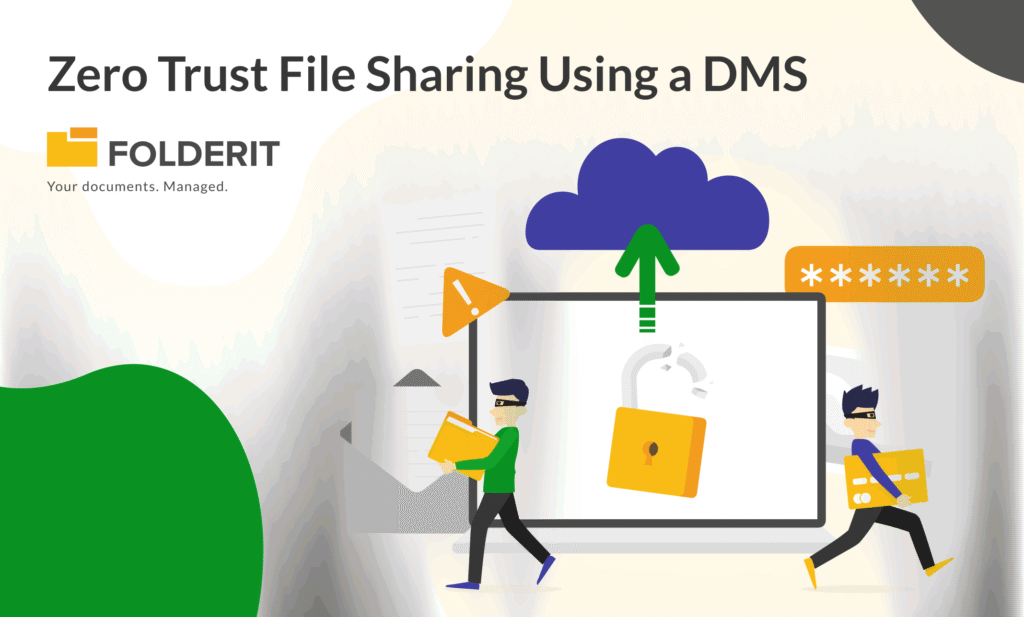You want a document management system that people actually use, not one they avoid. This list zeroes in on the best document management software across budgets, team sizes, and industries.
You will see options that are dead-simple, AI-savvy, audit-ready, and friendly to Microsoft or Google. By the end, you will know which best DMS system fits your stack, your risk profile, and your workflow style.
The Best Picks at a Glance
- Folderit: Best Overall & Ease of Use
- M‑Files: Best for Metadata‑Driven Automation
- Box: Best for Collaboration at Scale
- NetDocuments: Best for Compliance‑First Legal Teams
- Microsoft SharePoint Premium: Best for Microsoft 365 Governance
- DocuWare: Best for Intelligent Capture and AP Automation
- Laserfiche: Best for Public Sector Records and Governance
- Egnyte: Best for Hybrid Workloads and AEC/Life Sciences
- FileCloud: Best for Self‑Hosted Control and DLP
- Zoho WorkDrive: Best for Budget‑Friendly Team File Management
1) Folderit: Best Overall & Ease Of Use
Folderit nails the everyday work most teams do: capture, organize, approve, sign, and prove. Pricing is team‑based, not per user, with generous storage and built-in workflows that keep small and mid‑size teams moving fast without surprise add‑ons. If you want the best DMS software that people adopt in days, this is it.
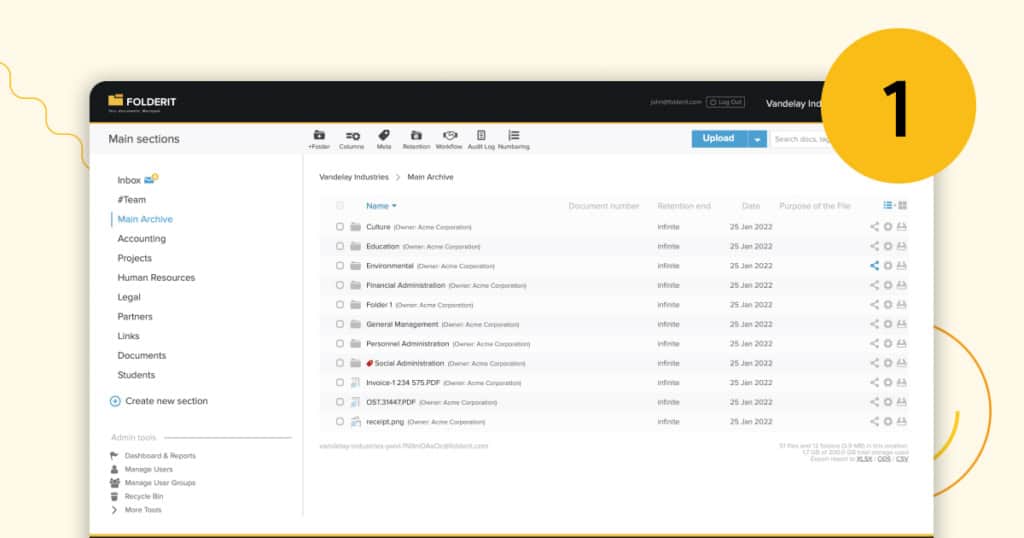
Security and compliance are table stakes here. Folderit advertises ISO 27001 posture with GDPR, HIPAAand Cyber Essentials alignment, plus SSO options like Microsoft Entra ID and Okta. That gives admins confidence while users enjoy a clean, web‑first UI and mobile flexibility.
Workflows, e‑sign, retention automation, and document numbering come standard, with a tidy audit trail and OCR search so you can actually find things. Enterprise buyers can choose single‑tenant hosting in the AWS region of choice or even on‑prem, which is rare at this price point.
If your brief is “make document chaos go away without a six‑month rollout,” Folderit should be first to test.
- Key takeaways: team‑based pricing; fast adoption; builtin approvals and e‑sign; SSO; ISO 27001, GDPR, HIPAA posture.
2) M‑Files: Best For Metadata‑Driven Automation
M‑Files organizes by what a document is, not where it lives. Its metadata‑first approach powers smart search, duplicate detection, and policy‑driven workflows that reduce human error. It is a standout for the best DMS system when automation and governance are your priorities.
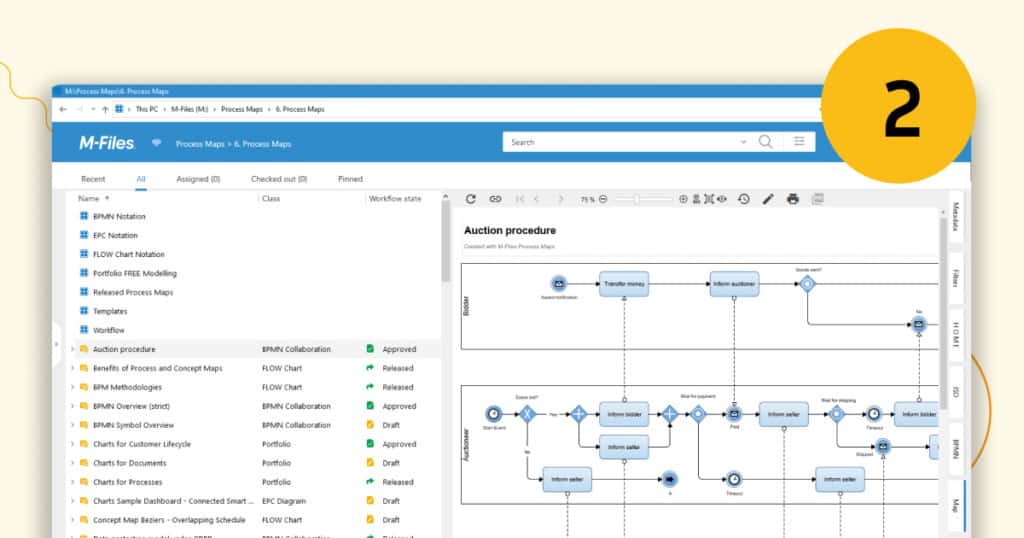
Recognition backs it up: M‑Files earned Gartner Peer Insights Customers’ Choice for Document Management in June 2025 and has strong satisfaction scores across industries. That matters if you need stakeholder proof.
Integrations with Microsoft 365 and Salesforce are mature, and alerting around duplicates and versions helps teams avoid the “wrong file” problem. Expect an expert‑led deployment rather than a DIY flip.
- Key takeaways: metadata‑driven vault; robust automation; strong customer ratings; deep Microsoft and CRM ties.
3) Box: Best For Collaboration At Scale
Box is built for cross‑company work. It pairs easy sharing and file collaboration with serious controls, 1,500+ integrations, and emerging AI features. If your goal is one place to create, share, automate, and audit across many tools, Box fits.
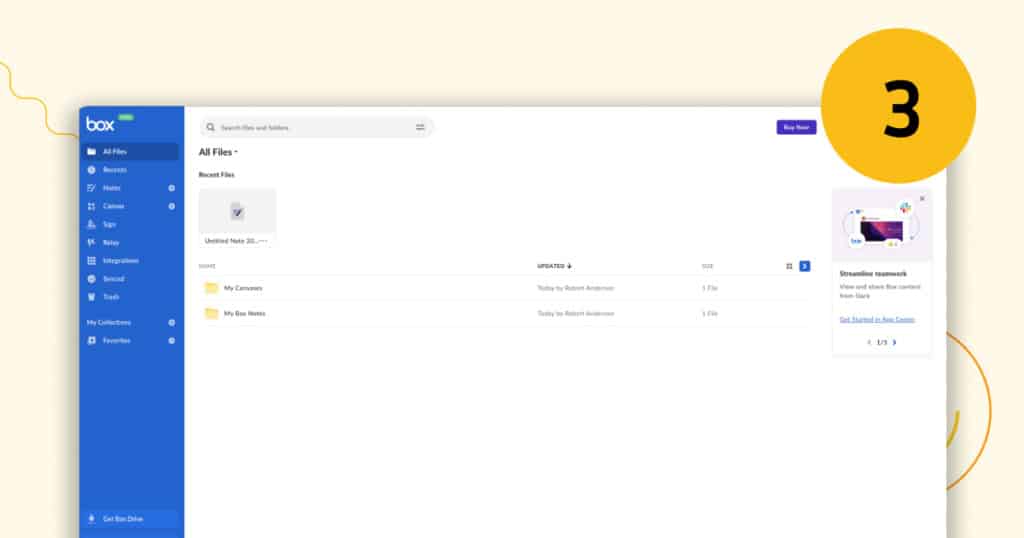
Gartner named Box a Leader for Document Management in December 2024, reflecting both execution and vision. Use Box when you need to standardize content operations across many departments without sacrificing usability.
- Key takeaways: enterprise‑ready collab; huge integration catalog; recognized market leader.
4) NetDocuments: Best For Compliance‑First Legal Teams
Legal and government teams choose NetDocuments for its compliance‑first cloud DMS, including FedRAMP, HIPAA, and GDPR coverage, legal‑grade search, versioning, and matter‑centric workspaces. It is the best document management system if audits, holds, and client demands drive your buying criteria.
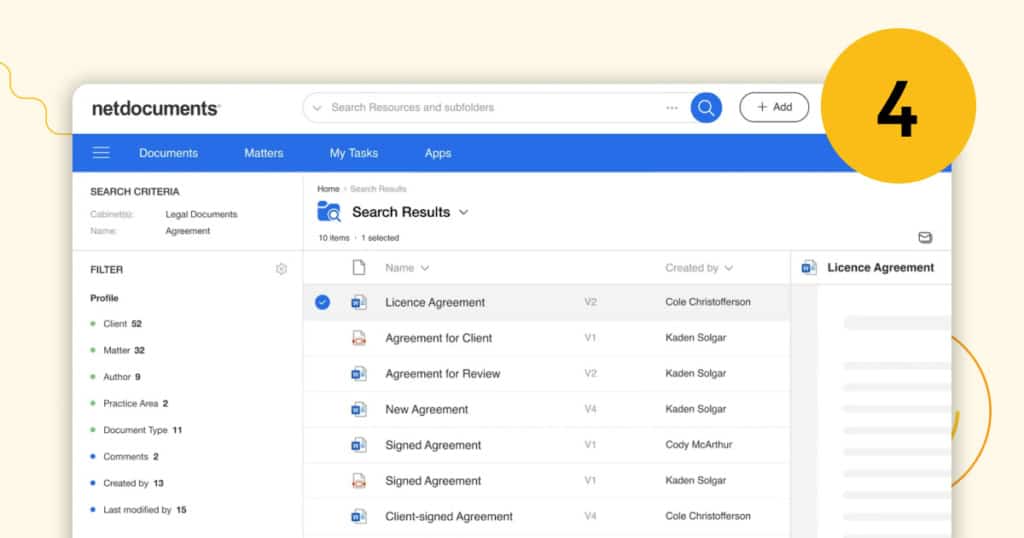
Scale and reliability are proven, with thousands of customers and 99.9%+ uptime reported. Deep Microsoft integrations and built‑in legal AI apps keep attorneys in familiar tools while improving speed and consistency.
- Key takeaways: FedRAMP/HIPAA/GDPR; matter workspaces; legal AI; 150+ integrations.
5) Microsoft SharePoint Premium: Best For Microsoft 365 Governance
If you live in Microsoft 365, start here. SharePoint Premium (the evolution of Syntex) adds AI‑powered content processing and stronger lifecycle controls on top of standard SharePoint libraries, versioning, and approvals. It is the best DMS software for Microsoft‑first orgs that want governance without leaving their suite.
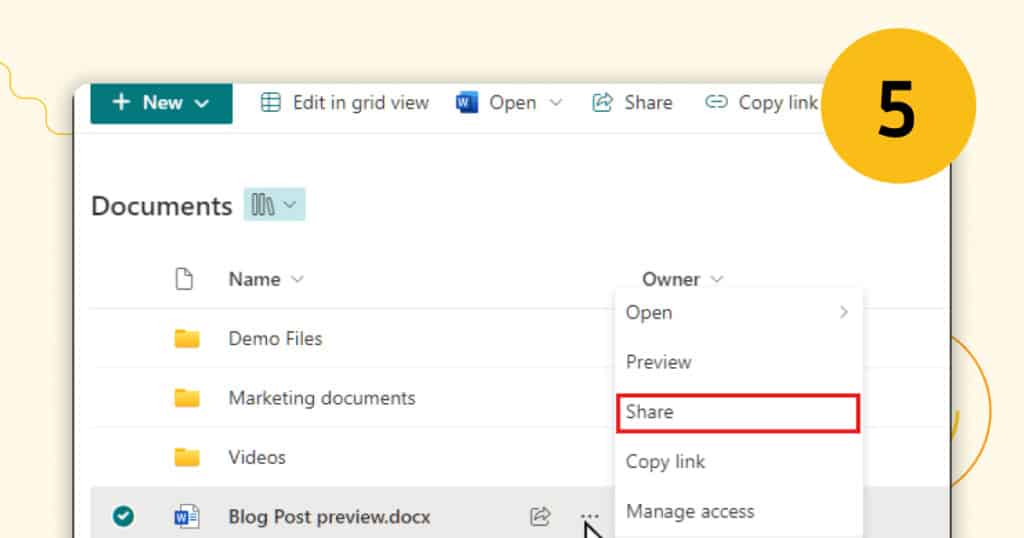
Retention, eDiscovery, and records features tie into Purview, while Advanced Management options harden sharing, lifecycle, and access policies across sites and OneDrives. Admins get control, users keep the familiar Office experience.
- Key takeaways: native to 365; AI content processing; strong retention and records; hardened admin controls.
6) DocuWare: Best For Intelligent Capture And AP Automation
DocuWare shines where paper, PDFs, and invoices still rule. Its Intelligent Document Processing and Intelligent Indexing use AI and HTR/OCR to classify forms, extract data, and kick off approvals fast. Finance and operations teams feel the lift first.
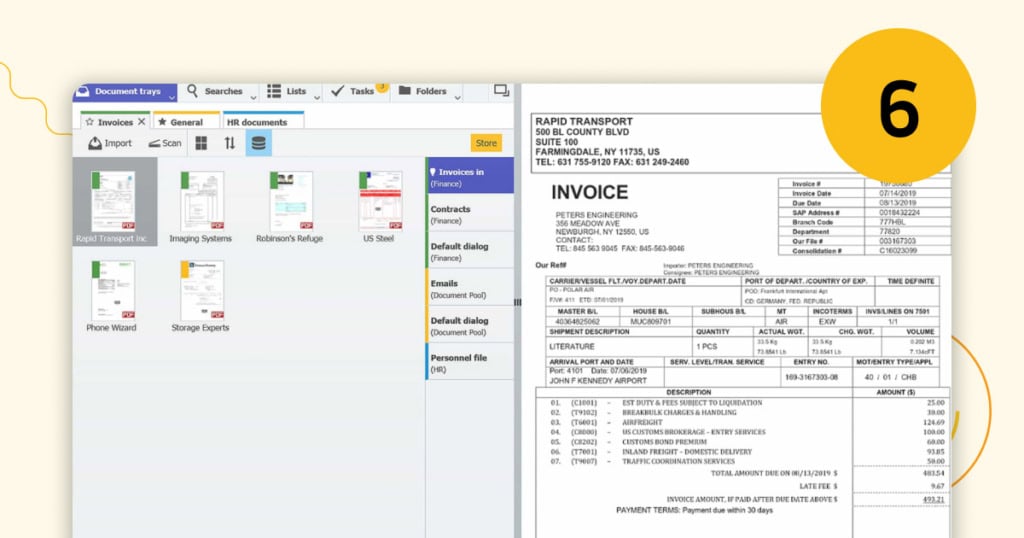
Security and compliance boxes are checked, with ISO 27001 and SOC 2 for the cloud service, plus HIPAA alignment. Pair it with MFPs or scanners and you have a reliable front door to digital workflows.
- Key takeaways: AI capture and indexing; AP‑friendly workflows; strong compliance posture.
7) Laserfiche: Best For Public Sector Records And Governance
Laserfiche pairs document management with serious records, retention, and FOIA support, which makes it a favorite across state, local, and regulated enterprises. Built‑in AI helps classify content and generate summaries, while policy‑driven retention reduces manual work.
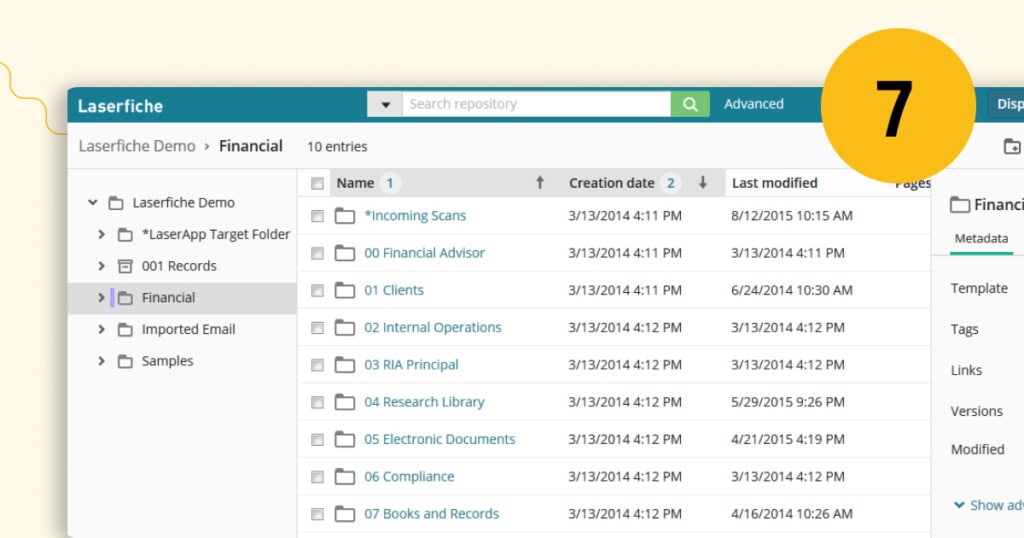
Analysts and customers rate it highly, with Leader placement in Gartner’s 2024 Document Management MQ and Customers’ Choice status in 2025 Peer Insights. If your world runs on file plans, cutoffs, and audits, start trials here.
- Key takeaways: robust records management; public records workflows; high analyst and user marks.
8) Egnyte: Best For Hybrid Workloads And AEC/Life Sciences
Egnyte blends content collaboration with security and governance, then layers domain‑specific AI. Its recent Agent Builder and AEC Project Hub point to a practical approach: turnkey AI for real project work and data risk reduction.
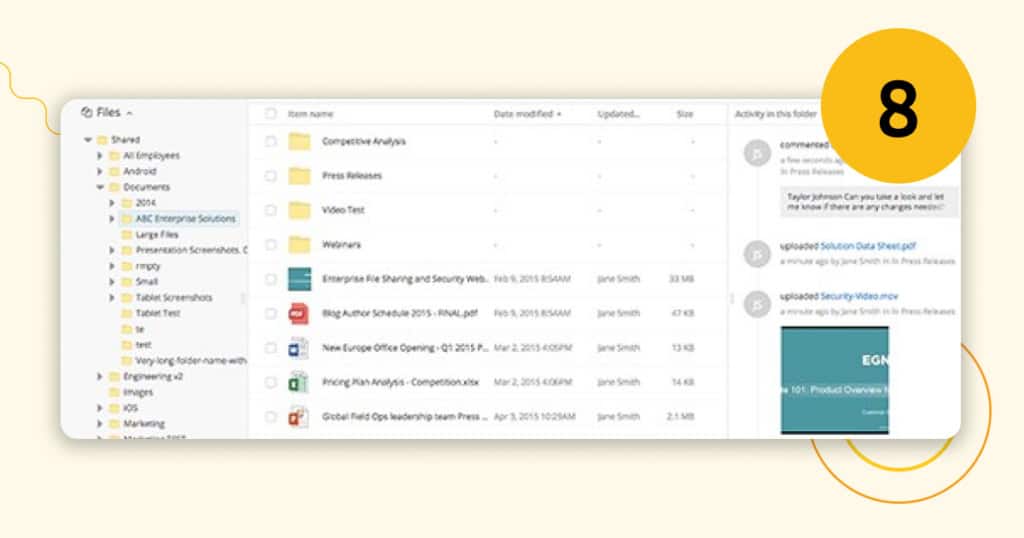
For firms juggling cloud shares, on‑prem file servers, and strict data controls, Egnyte provides one pane to secure, classify, and collaborate. It is a strong pick when you need the best DMS system versatility without losing compliance.
- Key takeaways: hybrid‑friendly; embedded AI agents; AEC and life‑sciences focus; governance built in.
9) FileCloud: Best For Self‑Hosted Control And DLP
Need to keep content behind your firewall with modern UX and sharing? FileCloud offers private cloud and on‑prem deployments with strong policy control, Smart DLP, and a compliance center that maps settings to frameworks like HIPAA, GDPR, and NIST 800‑171.
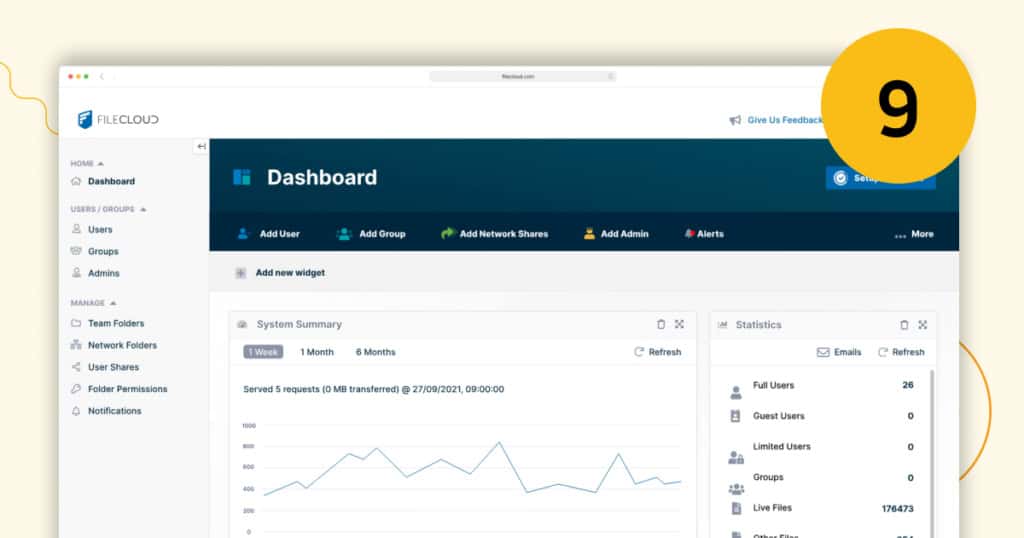
Admins get granular auditing, watermarking, ransomware safeguards, and rule‑based retention. It is a great fit for security‑sensitive teams that still want slick links, data rooms, and Office integrations.
- Key takeaways: self‑host or SaaS; deep DLP; compliance mapping; rich admin controls.
10) Zoho WorkDrive: Best For Budget‑Friendly Team File Management
WorkDrive brings shared team folders, unlimited version history, check‑in/out, DLP, and strong mobile apps at a small‑business‑friendly price, especially inside Zoho One or Workplace. It is ideal when you need structure and control without enterprise overhead.
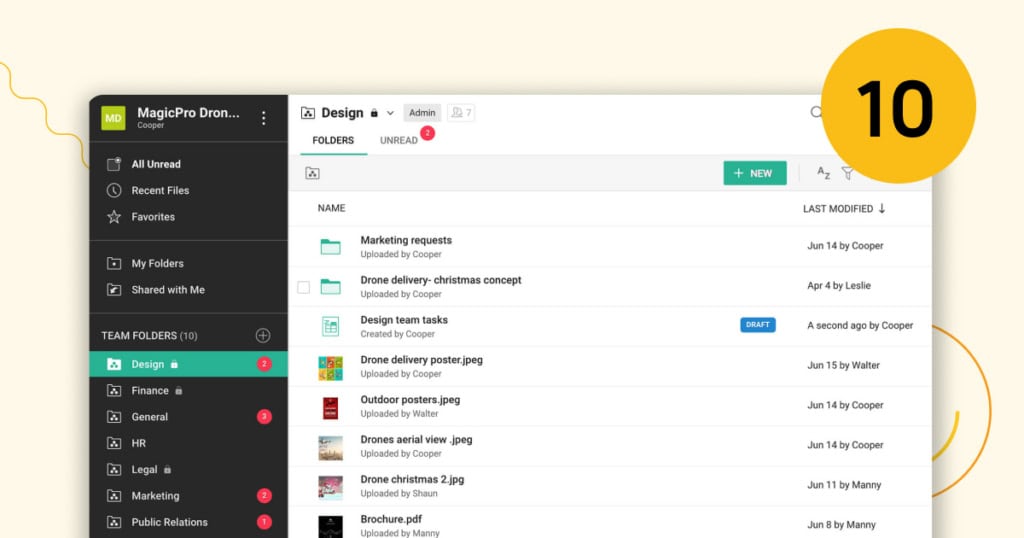
Security is solid, with SOC 2 and HIPAA support options, plus new version retention and external sharing controls. For many SMBs, it is the best document management software to grow into.
- Key takeaways: team‑centric folders; DLP and sharing controls; SOC 2 and HIPAA support; strong value.
Pro tip:
Before demos, list your “non‑negotiables” in plain language: retention rules, legal holds, identity provider, e‑sign volume, and any must‑have integrations. It turns a vendor demo into a checklist rather than a tour.
Pro tip:
If you scan paper, ask vendors to show live OCR and indexing on ugly pages: skewed, stamped, or handwritten. Your real workload lives there, not in pristine samples.
Conclusion
There is no one‑size‑fits‑all DMS. Folderit is the best overall for fast adoption and balanced features. M‑Files and Laserfiche lead on governance and automation. Box and Egnyte win for large‑scale collaboration and hybrid work.
NetDocuments and Microsoft SharePoint Premium serve compliance‑driven teams. DocuWare, FileCloud, and Zoho WorkDrive round out the field with strong capture, self‑hosting, and SMB value. Pick the best DMS system that meets your risk, stack, and speed goals, then run a tight pilot with real documents.
TL;DR
- Best overall: Folderit for speed, simplicity, and value.
- Deep automation and governance: M‑Files, Laserfiche, SharePoint Premium.
- Collaboration at scale: Box and Egnyte.
- Regulated and legal: NetDocuments.
- Paper‑heavy or self‑hosted: DocuWare and FileCloud.
Key Takeaways
- Match tools to truth: your compliance level, stack, and volume decide the right DMS, not g eneric feature lists.
- AI matters when it reduces clicks: pick features that auto‑classify, extract, route, or summarize real work.
- Governance beats storage: retention, audit trails, and least‑privilege access prevent risk more than “unlimited GB.”
- Pilot with messy docs: test scans, redlines, and legacy PDFs to reveal true fit.

